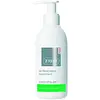What's inside
What's inside
 Key Ingredients
Key Ingredients

No key ingredients
 Benefits
Benefits

 Concerns
Concerns

 Ingredients Side-by-side
Ingredients Side-by-side

Water
Skin ConditioningCoco-Betaine
CleansingSodium Lauroyl Methyl Isethionate
CleansingSodium Chloride
MaskingAcrylates/C10-30 Alkyl Acrylate Crosspolymer
Emulsion StabilisingTromethamine
BufferingHydroxyacetophenone
AntioxidantSodium Methyl Isethionate
EmulsifyingPanthenol
Skin ConditioningAllantoin
Skin ConditioningBambusa Vulgaris Extract
Skin ConditioningLauric Acid
CleansingMelaleuca Alternifolia Leaf Oil
AntioxidantSodium Laurate
CleansingEthylhexylglycerin
Skin Conditioning1,2-Hexanediol
Skin ConditioningBetaine
HumectantDisodium EDTA
Water, Coco-Betaine, Sodium Lauroyl Methyl Isethionate, Sodium Chloride, Acrylates/C10-30 Alkyl Acrylate Crosspolymer, Tromethamine, Hydroxyacetophenone, Sodium Methyl Isethionate, Panthenol, Allantoin, Bambusa Vulgaris Extract, Lauric Acid, Melaleuca Alternifolia Leaf Oil, Sodium Laurate, Ethylhexylglycerin, 1,2-Hexanediol, Betaine, Disodium EDTA
Water
Skin ConditioningCoco-Glucoside
CleansingCocamidopropyl Betaine
CleansingSodium Cocoamphoacetate
CleansingPanthenol
Skin ConditioningLaureth-7 Citrate
CleansingPropylene Glycol
HumectantGlycyrrhiza Glabra Root Extract
BleachingSaccharomyces/Zinc Ferment
Skin ConditioningAllantoin
Skin ConditioningPEG-120 Methyl Glucose Dioleate
EmulsifyingAcrylates/C10-30 Alkyl Acrylate Crosspolymer
Emulsion StabilisingDiazolidinyl Urea
PreservativeSodium Benzoate
MaskingSodium Hydroxide
BufferingWater, Coco-Glucoside, Cocamidopropyl Betaine, Sodium Cocoamphoacetate, Panthenol, Laureth-7 Citrate, Propylene Glycol, Glycyrrhiza Glabra Root Extract, Saccharomyces/Zinc Ferment, Allantoin, PEG-120 Methyl Glucose Dioleate, Acrylates/C10-30 Alkyl Acrylate Crosspolymer, Diazolidinyl Urea, Sodium Benzoate, Sodium Hydroxide
 Reviews
Reviews

Ingredients Explained
These ingredients are found in both products.
Ingredients higher up in an ingredient list are typically present in a larger amount.
Acrylates/C10-30 Alkyl Acrylate Crosspolymer is a synthetic polymer. It is used to thicken and improve the texture of products. Due to its properties, it can prevent water and oil ingredients from separating.
Allantoin is a soothing ingredient known for its protective and moisturizingg properties. Because of this, it is often added to products with strong active ingredients.
Studies show higher concentrations of this ingredient can promote wound healing.
Though it can be derived from the comfrey plant, allantoin is produced synthetically for cosmetic products to ensure purity.
Learn more about AllantoinPanthenol is a common ingredient that helps hydrate and soothe the skin. It is found naturally in our skin and hair.
There are two forms of panthenol: D and L.
D-panthenol is also known as dexpanthenol. Most cosmetics use dexpanthenol or a mixture of D and L-panthenol.
Panthenol is famous due to its ability to go deeper into the skin's layers. Using this ingredient has numerous pros (and no cons):
Like hyaluronic acid, panthenol is a humectant. Humectants are able to bind and hold large amounts of water to keep skin hydrated.
This ingredient works well for wound healing. It works by increasing tissue in the wound and helps close open wounds.
Once oxidized, panthenol converts to pantothenic acid. Panthothenic acid is found in all living cells.
This ingredient is also referred to as pro-vitamin B5.
Learn more about PanthenolWater. It's the most common cosmetic ingredient of all. You'll usually see it at the top of ingredient lists, meaning that it makes up the largest part of the product.
So why is it so popular? Water most often acts as a solvent - this means that it helps dissolve other ingredients into the formulation.
You'll also recognize water as that liquid we all need to stay alive. If you see this, drink a glass of water. Stay hydrated!
Learn more about Water